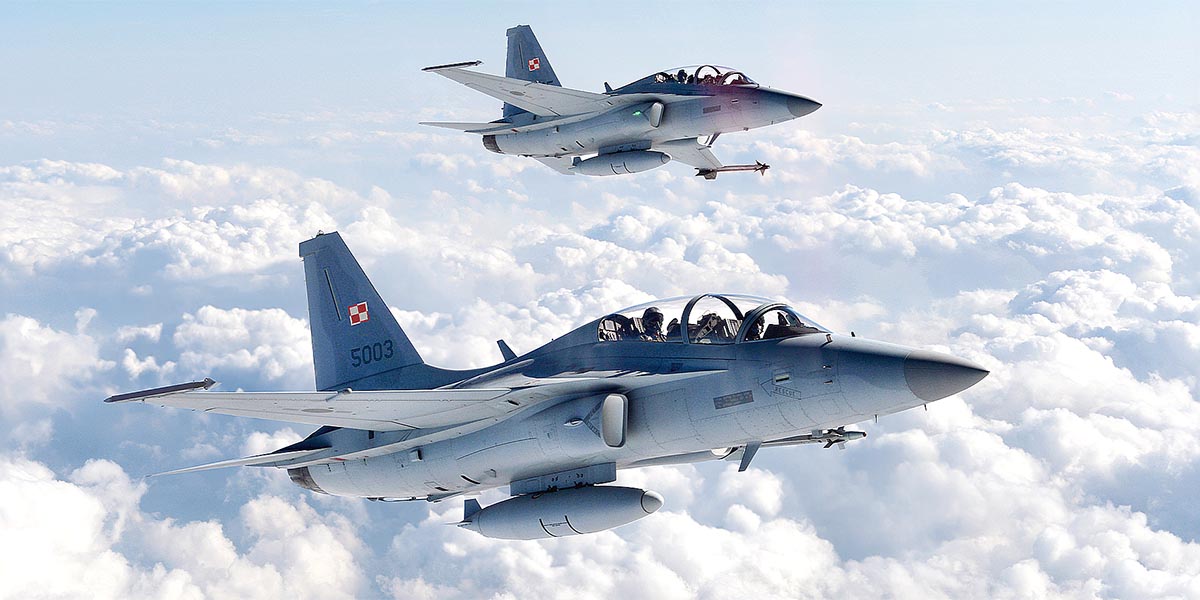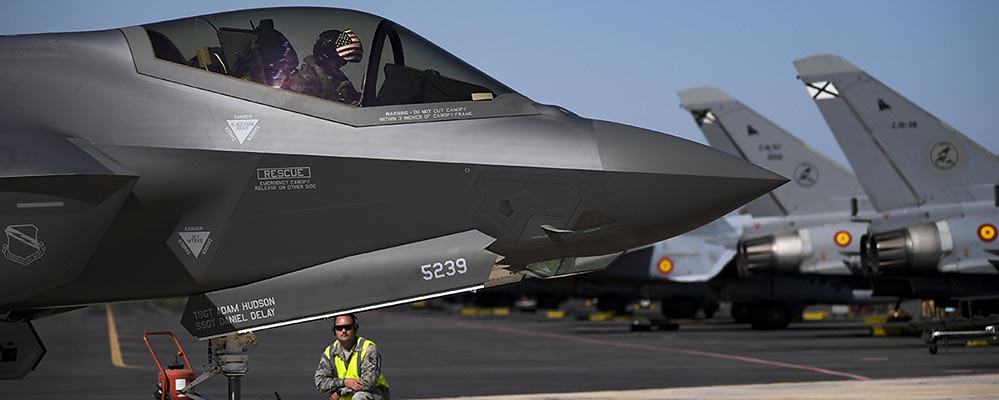The alternatives to the F-35A for a second fighter aircraft for the Spanish Air Force
As time goes by, the chances of the Spanish Air Force ending up receiving the F-35A seem to be running out.
There are no technical reasons for this, only political ones. The same reasons why the government has not yet confirmed the purchase of the F-35B for the Spanish Navy, being the only option available to replace to the Spanish Harrier II Plus. This delay threatens to leave the Spanish Navy without combat aircraft in the medium term.

I have already spoken several times here about the convenience of Spain acquiring the F-35A for its air defense, pointing out that the Air Force has always had at least two different fighter models in operation for an important reason: If there were a failure in a specific model that forced the entire fleet to be immobilized, Spain would be left without combat aircraft to defend its airspace as soon as the EF-18 are withdrawn from service. This is the risk that is run by concentrating fighter acquisitions on a single model, the Eurofighter.

If we look at our surroundings, all air forces of some importance have at least two fighter models, precisely for that reason. Italy has the F-35 and the Eurofighter, as does the United Kingdom. At the same time, Germany has also chosen that option. France has the Rafale and the Mirage 2000. Poland has the F-16 and the FA-50 (which is now replacing the old MiG-29 and Su-22). Greece has the F-16, F-4E and Mirage 2000 and has ordered 18 Rafale fighters. Morocco has F-16 and Mirage F1 (in addition to old F-5E). Likewise, Algeria has MiG-29 and Su-27.
The alternatives to the F-35A for a second fighter
If Spain did not want to acquire the F-35A for the Spanish Air Force, it could consider other options. Obviously they will not be as good as a fifth generation fighter, but at least they would be cheaper and would cover the needs of our air defense. I indicate some of them here.

Saab JAS-39 Gripen
It is one of the best light fighters on the market. This Swedish aircraft is maneuverable, cheap and easy to maintain. It has the lowest operational cost of all Western fighters: $4,700 per hour. Saab has already launched the JAS-39E version. Within NATO it is used by Sweden, the Czech Republic and Hungary (as well as the United Kingdom, which operates one at the Empire Test Pilots' School). Brazil has reached an agreement to manufacture its own Gripens, so Spain would have options to achieve a similar agreement through Airbus.

Boeing F/A-18E/F Super Hornet
It's like an EF-18 Hornet on steroids, an excellent naval fighter that has notably replaced the exceptional F-14 Tomcat. It has the great advantage of being a very versatile model capable of carrying out the most varied missions (there is even an electronic warfare version, the EA-18G Growler). The Super Hornet is used by the US Navy and the Royal Australian Air Force. A year ago I already proposed it as a possible second option to replace the EF -18 Spanish. It has the advantage that it shares components with the Hornet, which would save us money on spare parts. Its drawback is its operational cost: between 11,000 and 24,000 dollars per hour, similar to the 18,000 for the Eurofighter but well above the 4,700 for the Gripen.

Dassault Rafale
It is the French rival of the Eurofighter and one of the best fighters on the market. It made its first flight on July 4, 1986, so it is no longer a new fighter, but it entered service in 2001. Dassault has been developing new versions and has become a bestseller. In NATO it has been acquired by France (both its air force and its navy, since it has a naval version, the Rafale M), Croatia and Greece. Your operational cost It is about $16,500 per hour, somewhat cheaper than the Eurofighter.

KAI FA-50 Golden Eagle
It is a very good light fighter made in South Korea, an armed version of the KAI T-50 Golden Eagle advanced training aircraft. It has very good features, very advanced avionics and, in addition, it could cover another need of the Air Force: the replacement of the F-5BM of the 23rd Wing, so in addition to its role as a light fighter , would also serve as a fighter and attack training aircraft. Its only operator in NATO is the Polish Air Force, which has acquired a total of 48 FA-50s to replace its aging MiG-29 and Su-22. Poland chose this option over the F-16 because of its low cost and the speed with which KAI serves its fighters.

Leonardo M-346FA
It is the Italian competitor to the FA-50, based on the M-346 Master advanced training aircraft. At the moment it is in the development phase but it has very good prospects. Last month I already pointed out the M-346 as my favorite option to replace the Spanish F-5BM. By purchasing the M-346 and its hunting version, Spain would have a good weapons system to cover two different needs.

KAI KF-21 Boramae
The KF-21 Boramae is the South Korean alternative to the F-35. It is not a strictly fifth generation aircraft, like its competitor, but rather it appears in that intermediate generation between the fourth and fifth just like the Super Hornet, the Gripen or the Eurofighter. The KF-21 is not a stealth aircraft like the F-35, but it has a lower radar signature than other fighters. In addition, the Boramae is a twin-engine aircraft, a notable advantage over the F -35, especially for countries with a long coastline (as is the case of South Korea and also Spain; the US Navy has always preferred twin-engine aircraft due to the greater risk of running out of an engine on the high seas). The Boramae made its first flight on July 19, 2022 and is currently in the development phase.

Boeing F-15EX Eagle II
Dreaming is free, so the most recent version of my favorite hunt could not be missing here. The F-15 is one of the best fighters of recent decades. Boeing has continued to develop new variants of this exceptional air superiority aircraft and also its fighter and attack variant, the F-15E Strike Eagle. The F-15EX Eagle II is a derivative of the F-15E. It has been in production since 2021 for the US Air Force. Its objective is to replace the F-15C fighters. The reason for the F-15EX is to fill the gap left by an insufficient number of F-22s and delays in the F-35 program.

Lockheed Martin F-16V Block 70/72
Some people will think that I am joking by putting on this list an aircraft that has already turned 50 years old, but if I have put the F-15, the F-16 also deserves a place. This excellent multipurpose fighter is still in production and is already in its F-16V Block 70 variant, a nickname that is due to the fact that it was developed by Lockheed Martin for the United Arab Emirates Air Force. The F-16V has improvements to its radar, avionics and engine. Lockheed has already committed upgrade packages to this version with South Korea, Greece, Morocco and Turkey, as well as confirmed aircraft sales new to Bahrain, Bulgaria, Slovakia, Jordan, Morocco, Taiwan and Turkey. The F-16 remains a formidable fighter, relatively cheap and with a low operating cost. That's why 50 years later it is still a bestseller.
---
Main photo: U.S. Navy. An F-35A of the 388th Fighter Wing of the United States Air Force at Los Llanos Air Base, Albacete, along with several Eurofighters of the Spanish Air Force.
|
Don't miss the news and content that interest you. Receive the free daily newsletter in your email: |
- Most read
- The insertion of Spanish Marines in Poland using USMC MV-22B Osprey
- The new CADPAT (MT) digital camouflage of the Canadian Armed Forces
- A large black bat painted on a United States Marine Corps F-35B in Japan
- The marine infantry forces of NATO countries, their age and size
- Sierra Army Depot, a huge United States base with hundreds of Abrams tanks stored
- The flight of the AB-212 'Gato' helicopters of the Spanish Navy in Latvia before their farewell
- The alternatives to the F-35A for a second fighter aircraft for the Spanish Air Force

 ES
ES







Opina sobre esta entrada: